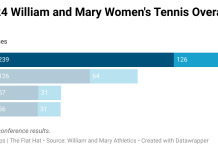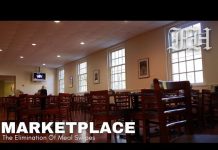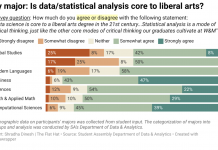You might have expected resounding applause and inflamed rhetoric, but, in fact, far less pomp and circumstance attended the State of the City address last night than its name would imply. The yearly address, delivered by Mayor Clyde Haulman, instead sets the main goals of the city in the upcoming year.
The speech included the usual suspects of city governance, focusing mainly on planned improvement of several under-developed regions in Williamsburg. But among a wide review of city policies Haulman included, almost as an afterthought, a brief section on town-gown relations, stating that they “are as good as he’s ever seen them.”
That may well be true, if only because students are currently complacent enough to accept the meager compromises the city has offered, but there is one town-gown issue that remains unsettled, desperately under-addressed: the city still refuses to speak to the lack of affordable student housing. We cannot, both as students and as Williamsburg residents, allow this ongoing problem to be swept under the rug.
There seems to be the assumption, at least implied in the omission of student housing from the city’s agenda, that last year’s four-person rule amendment was compromise enough to satisfy student concerns — never mind that the revised policy only applies to a handful of houses over the 2,000-square-foot threshold. Unfortunately students, either out of agreement or apathy, do not seem motivated to push the issue further.
We maintain that a further revision of the four-person rule, applying the current amendment to a larger range of residences, is still necessary. It is only common sense that four unrelated but still responsible tenants ought to be allowed to rent a four-person house. But, given the city’s seeming reluctance to further address the issue and students’ unwillingness to continue advocating it, this option does not appear politically feasible.
Thankfully, we don’t think that rehashing a tired debate is our only option for a reasonable solution. There are ways to address student housing concerns, in fact, already within the city’s plan for development. Some of the main areas of improvement Haulman highlighted are the residential and shopping areas at the intersection of Monticello Avenue and Mt. Vernon Avenue. Several blocks around that area have already been successfully targeted for redevelopment, such as the former location of Dis-N-That and Monica’s.
This planned redevelopment would be the perfect opportunity to incorporate student-friendly housing into the area. The intersection is close to campus, with many students already living in the surrounding area. This lends city planners the ability to centralize student presence, as opposed to creating a situation in which student tenants will clash with surrounding neighborhoods.
Yet, there are obvious reasons why the city would be opposed to the incorporation of student-friendly housing. For all intents and purposes, student-friendly is just a synonym for low-rent. In the areas the city has already chosen to redesign, the trend is toward higher-end housing and retail, like the New Town or High Street developments. City officials have an implied incentive, given their development goals, to price students out.
Of course, despite the assumptions of city planners, students and development are not mutually exclusive. Creating a vibrant student-centric area can stimulate surrounding businesses, the same symbiotic relationship found in any traditional college town. But the city remains averse to promoting that specific type of development.
In short, due to certain assumptions among the city’s leadership, ignoring the lack of affordable student housing remains the path of least resistance. It is our duty as citizens to change that. We must make it clear to the city that it has a choice in this regard: either expand the four-person rule, or make student-friendly housing a priority. There are ready excuses for opposition to both these ideas, but students must either force city officials to choose between the two, or settle for the obviously inadequate status quo.


































